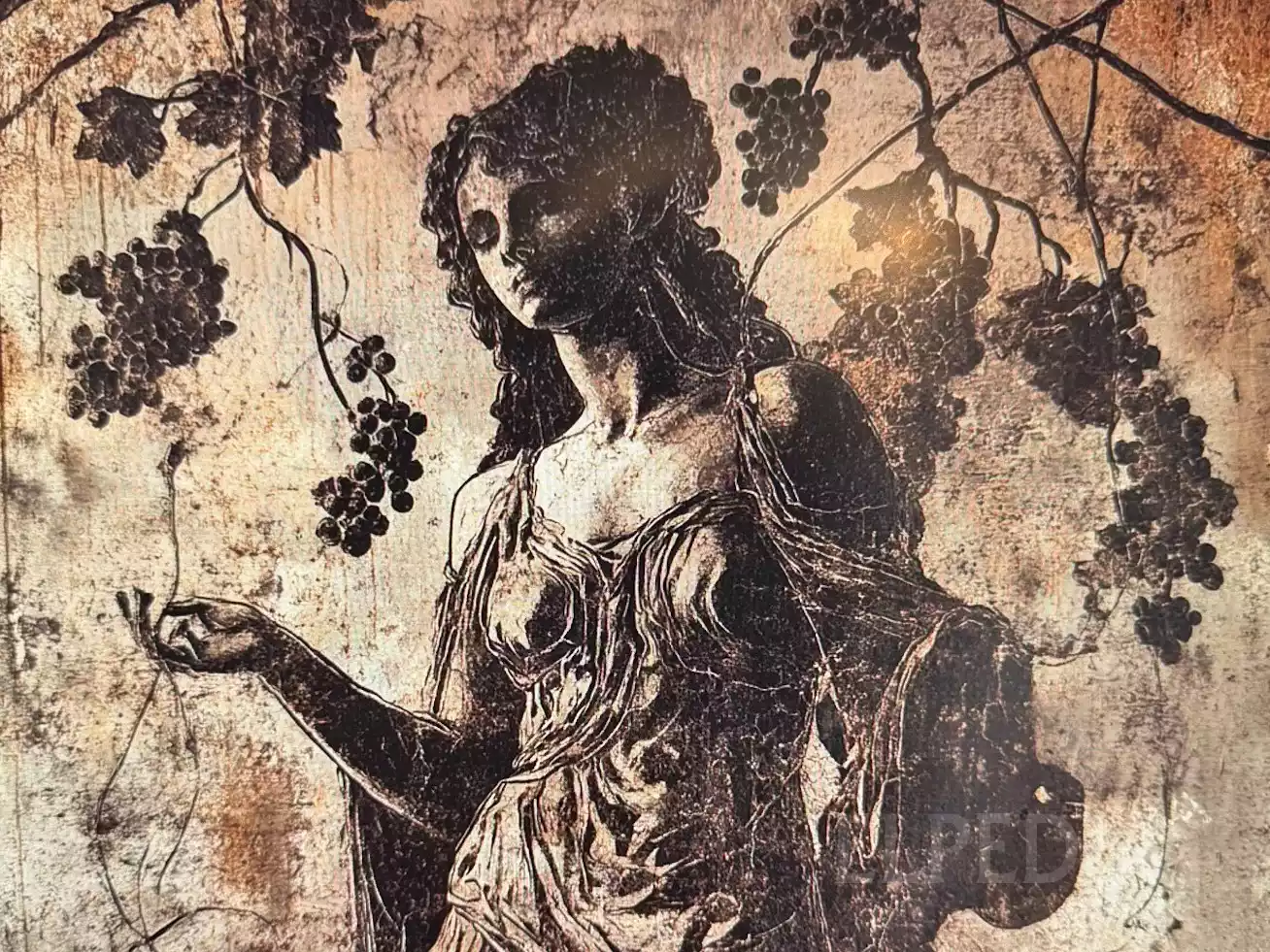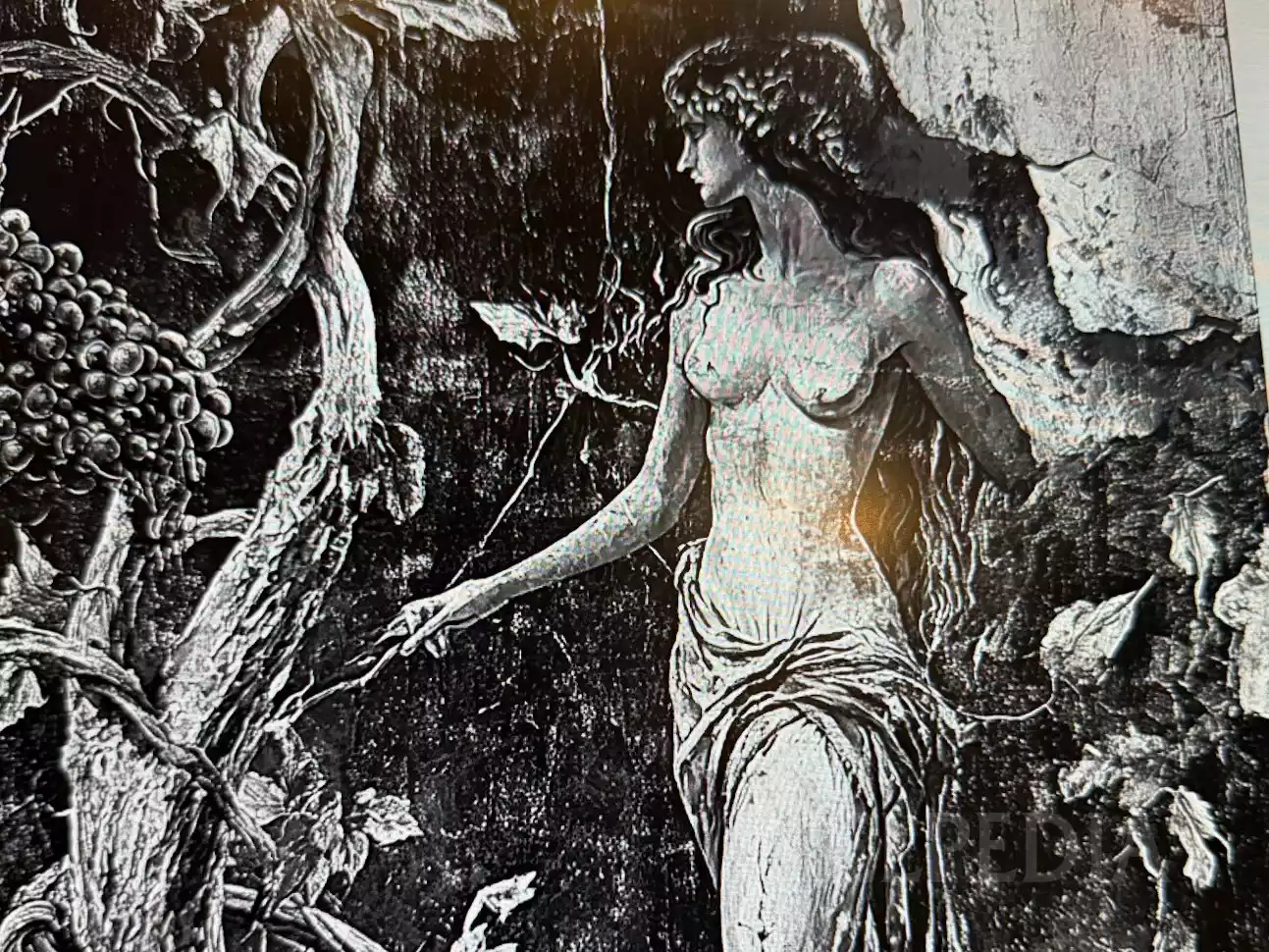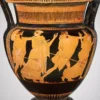
The Thyoni, the deified form of Semele, is a characteristic example of the mythological transition from mortal to divine status and is inextricably linked to the Dionysian worship.
Thyoni is one of the most interesting renamings in Greek mythology, as it marks the transformation and deification of the mortal Semele, mother of Dionysus. Her story reflects the timeless attraction that the idea of the transition from mortal existence to divine status held for the ancient Greeks. Semele, daughter of King Cadmus of Thebes and Harmony, was one of the mortal lovers of Zeus, with whom she bore Dionysus. Her renaming to Thyoni is inextricably linked to the ecstasy and enthusiasm that characterize the Dionysian worship, creating a multi-layered symbolism that permeates ancient religious thought.
The mythological narrative of the transformation of Semele into Thyoni is not just an exciting story, but serves as a mirror of the deeper perceptions of ancient Greek cosmology regarding the relationship between mortals and immortals. Her case highlights the exceptional instance of a mortal who, through her divine childbirth and subsequent search by her own son, manages to transcend the limits of mortality and enter the pantheon of gods, becoming a deity associated with the worship of Dionysus.
Semele and the Birth of Dionysus
The Romantic Relationship with Zeus
The narrative of the romantic connection between the father of the gods and the mortal princess of Thebes is one of the most characteristic expressions of the intertwined relationships between gods and mortals in Greek mythology. Semele, daughter of Cadmus, founder of Thebes, and Harmony, caught the eye of Zeus, who, following the pattern of his numerous romantic adventures with mortal women, approached her and entered into a relationship with her.
This relationship bears all the characteristics of Zeus’s divine loves: the element of transformation, secrecy, and ultimately, the intervention of the jealous Hera. Zeus appeared to Semele in human form, concealing his true divine nature so as not to frighten his beloved. Semele initially did not know the true identity of her lover, a fact that Hera later exploited to set her destructive trap.
As mentioned in ancient studies on mythology, Semele’s relationship with Zeus reflects the dialectical relationship between mortals and immortals in Greek cosmology. Semele is presented as a complex personality: “Semele is proud as a goddess, but timid as a child. Semele tames the beasts in the ravines, but would kneel at the sight of a single man” (Parthenōn).
Hera’s Trap and the Tragic Death
The news of Semele’s pregnancy quickly reached Hera’s ears, who, enraged by yet another infidelity of her husband, decided to take revenge on her mortal rival in a deceitful and destructive manner. Transformed into an old woman, likely a nurse of Semele, Hera approached her and sowed doubt in her heart about the true identity of her lover.
The cunning goddess suggested to Semele the idea of asking the supposed Zeus to reveal himself in his true form as proof of his divine identity. Zeus, who had promised Semele to fulfill every wish of hers, found himself trapped by his own oath when she asked him to appear to her in his true form, with all the glory and radiance that accompanied him as king of the gods.
Knowing the destructive consequences that fulfilling this request would have, Zeus tried to dissuade Semele, but she insisted. Thus, the god appeared before her in all his splendor, surrounded by thunder and lightning. This sight was unbearable for Semele’s mortal nature, which was struck by lightning and burned instantly.
The tragic end of Semele is one of the most painful examples of the inability of mortals to directly confront the divine essence in ancient Greek Dionysian perception. (Search for more information with the word: Dionysus mysteries thiasos)
The Premature Birth and the Rescue of Dionysus
At the moment of her death Semele‘s pregnancy was in its sixth month. Through the flames that consumed her mortal body, Zeus managed to snatch the unborn child, Dionysus, saving him from destruction. According to the most prevalent version of the myth, Zeus sewed the embryo into his thigh, where Dionysus continued to develop until the pregnancy was completed.
This rescue of Dionysus is a crucial point in the mythological narrative, as it ensures the birth of one of the most important gods of the Greek pantheon. This ritual “second birth” of Dionysus from Zeus’s thigh also explains the invocation of the god as “dimother” (one who has two mothers), as well as the epithet “Eiraphiotis” attributed to him, which is etymologically related to the word “to sew.”
The premise of rescuing Dionysus through his incorporation into his father’s body reverses the usual pattern of maternal pregnancy and creates a mythological symbolism around divine birth and the transcendence of mortal nature. As mentioned in Semele, her tragic fate and subsequent deification are inextricably linked to the birth and unique nature of her son, who embodies the dialectical relationship between the mortal and the immortal element.

Thyoni is depicted as “divine Maenad” according to ancient sources, reflecting her role as the primary ecstatic follower of her son Dionysus.
The Transformation into Thyoni
The Descent of Dionysus to Hades
The posthumous journey of Semele is a critical point in the mythological narrative of her transformation into a divine entity. After her tragic death from Zeus’s lightning, Semele’s soul ended up in the Underworld, as was the case with all mortals. However, her case is fundamentally different due to the later intervention of her son, Dionysus, who attempted to descend into the realm of Hades in order to retrieve his mother.
Dionysus’s descent into Hades constitutes one of the most significant acts of the god and fits into the broader mythological motif of gods or heroes descending into the world of the dead to seek loved ones. According to Thyoni, this endeavor of Dionysus reflects the deep emotional connection with his mother, as well as his divine power to transcend the boundaries between worlds.
Dionysus’s journey to the Underworld is described in various versions of the myth. In some versions, the god entered Hades through the Alcyonian lake in the region of Lerna, while in other traditions, it is said that he found the entrance at Taenarum in Laconia. His descent was accompanied by his entourage, the Maenads and Satyrs, who introduced into the world of the dead the vitality and ecstasy that characterize Dionysian worship, creating a striking contrast with the usual atmosphere of Hades.
Dionysus’s ability to penetrate the boundaries between life and death is a central element of his theology and is directly related to the characteristics of his worship, which focuses on rebirth and transformation. (Search for more information with the word: descent Dionysus Hades mythology)
The Search and Resurrection of the Mother
Dionysus’s search for Semele in the Underworld is a poignant aspect of the myth, as the god, who had never known his mother while she was alive, attempts to bring her back to the world of the living. According to the sources, Dionysus confronted Hades and Persephone, the rulers of the Underworld, asking for the release of his mother’s soul.
Unlike other descent myths into Hades, such as Orpheus’s for Eurydice, Dionysus’s mission was successful. As noted in Bibliakos’s work on the sacred and drama, “Semele does not vanish with Zeus’s lightning. She passes into the underworld and Dionysus takes on the task of retrieving her.” The successful retrieval of Semele from Hades represents one of the rare instances in Greek mythology where death is not an irrevocable state.
Dionysus’s success is attributed to various factors that highlight his unique position in the Greek pantheon. First, as the son of Zeus, Dionysus possessed significant divine power and prestige. Second, his nature as a god of rebirth and transformation made him particularly capable of transcending the boundaries between life and death. Finally, according to some traditions, Dionysus offered the plant myrtle to Hades as a price for the release of Semele, which subsequently became sacred in the worship of chthonic deities.
The Deification and New Identity
The retrieval of Semele from the Underworld marks the beginning of her transformation from mortal to divine entity. At this critical point in the myth, her renaming to Thyoni occurs, symbolizing her new status and her connection to Dionysian worship.
The name Thyoni, according to its etymological analysis presented in comments on Pindar’s work, derives from the root “thyō,” meaning “to rush passionately” or “to be in ecstasy.” As stated, “Thyoni the Semele… is named from the passion surrounding Dionysus, as she sacrifices and is in ecstasy during the dances. Thus, the Thyiads are the Bacchae, and the thyrsus are the thyrsi.” This etymological connection highlights the close association of the renamed Semele with the ecstatic nature of Dionysian worship.
Semele’s transformation into Thyoni was accompanied by her deification, that is, her elevation to the rank of immortals. Decharme, in his study of the mythology of ancient Greece, states: “Thyoni (the divine Maenad), and she becomes inseparable from her son’s companion.” Thyoni thus becomes a divine companion of Dionysus, participating in his entourage and in the rituals associated with his worship.
The deification of Semele/Thyoni reflects an important dimension of Dionysian theology: the possibility of transformation and transcendence of the boundaries between mortal and immortal. Her transformation is not merely a personal elevation but represents the potential for transition from mortality to divinity that participation in Dionysian worship and its mysteries offers.

The transformation of Semele into Thyoni symbolizes the Dionysian perception of the possibility of transcending the boundaries between mortality and divinity, a central theme of the worship.
Different Interpretations & Critical Assessment
The case of Thyoni as the evolution of Semele is the subject of different theoretical approaches in contemporary mythological research. Researchers such as Walter Burkert and Karl Kerényi identify in this myth archetypal patterns of death and rebirth found in various Mediterranean cults. Jane Harrison, for her part, has argued for the connection of the renaming with pre-Greek chthonic cults, while Marcel Detienne proposes an interpretation that links Thyoni with the concept of motherhood in Dionysian worship. In contrast, Robert Graves recognizes political dimensions in the myth that reflect the conflicts between older and newer religious systems in the Greek world.
Conclusion
The transformation of Semele into Thyoni constitutes one of the most emblematic cases of the transition from mortal to divine state in Greek mythology. Her dual existence, as a mortal mother and as a deified companion of Dionysus, reflects the dialectical relationship between the mortal and the immortal in ancient Greek cosmology. Her case highlights the dynamic of mythological narratives to convey deep philosophical and existential truths through symbolic stories.
Thyoni, as a deified figure, remains in collective memory as a symbol of human potential for transcending limits and transformation, offering a timeless narrative about the relationship between mortality and divinity that continues to inspire and provoke thought.
Frequently Asked Questions
What is Thyoni’s relationship with Dionysian worship?
Thyoni is inextricably linked to Dionysian worship, as her name derives from the root “thyō,” meaning “to be in ecstasy.” As the deified form of Semele and mother of Dionysus, Thyoni is a central figure in the Dionysian pantheon. In worship practice, she often appears as a companion of her son, participating in the ecstatic ceremonies and mystery circles that characterize Dionysian worship.
Why does mythology mention the renaming of Semele to Thyoni?
The mythological tradition regarding the renaming of Semele to Thyoni reflects a deeper transformation of her identity. The name change signifies her transition from mortal status to divine essence, a substantial transformation associated with her deification. Furthermore, the new name Thyoni emphasizes her connection to the ecstatic character of Dionysian worship, establishing her position within the religious system.
How is Thyoni depicted in ancient Greek art?
Depictions of Thyoni in ancient Greek art are relatively limited and often indistinguishable from other figures associated with Dionysian worship. She usually appears as a dignified female figure in the entourage of Dionysus, often with ritual objects such as thyrsi or wreaths of ivy. In some vases, she is recognized by inscriptions or by her position next to Dionysus, indicating her maternal relationship and divine essence.
Are there references to Thyoni outside of Greek mythology?
Although Thyoni is primarily a figure of Greek mythology, corresponding maternal deities associated with cults of ecstasy and rebirth are found in various Mediterranean and Near Eastern religious traditions. Researchers have identified parallels with figures such as Cybele, Isis, and Magna Mater, which incorporate similar patterns of motherhood and transformation, albeit with different cultural expressions and religious practices.
What is the significance of Dionysus’s descent into Hades for the mythological narrative of Thyoni?
Dionysus’s descent into Hades to retrieve Semele is a pivotal point in the mythological narrative of Thyoni. This act underscores Dionysus’s power to transcend the boundaries between life and death, imparting a redemptive dimension to his mythology. At the same time, the successful retrieval of his mother and her subsequent deification highlight the thematic axes of rebirth and transformation that permeate Dionysian worship.
Bibliography
- Bjørn Drachmann, A. (2012). Scholia in Pythionicas. Page 87.
- Bibliakos, I. (2004). On the Sacred and the Drama: Theatrical Approaches. Page 50.
- Decharme, P. (2015). Mythology of Ancient Greece. Page 432.
- Mac Góráin, F. (2019). Dionysus and Rome: Religion and Literature. Page 135.
- Parthenōn: mēniaion periodikon syngramma (1872). Volume 2, Page 1111.
- Bernabé, A., Herrero de Jáuregui, M., & Jiménez San Cristóbal, A. I. (2013). Redefining Dionysos. Page 90.

